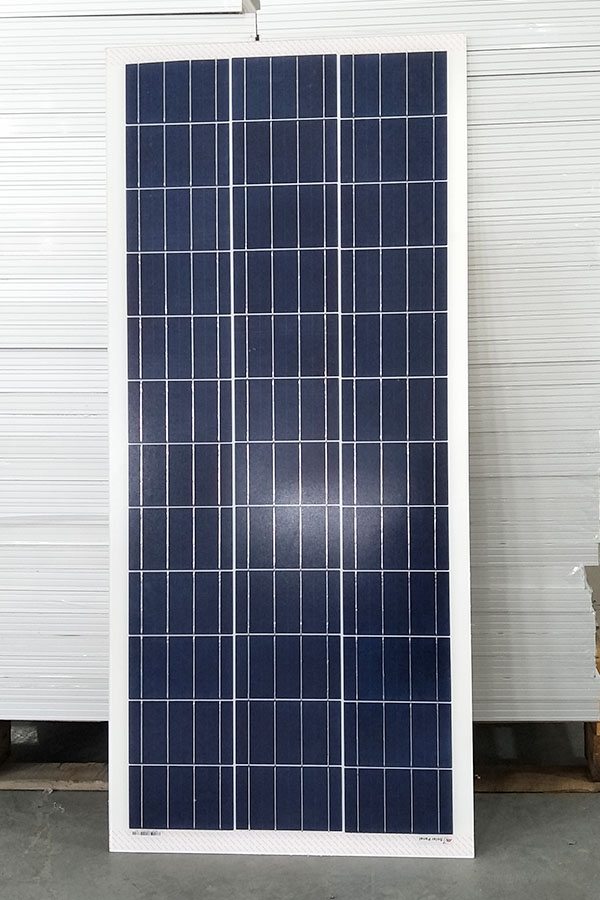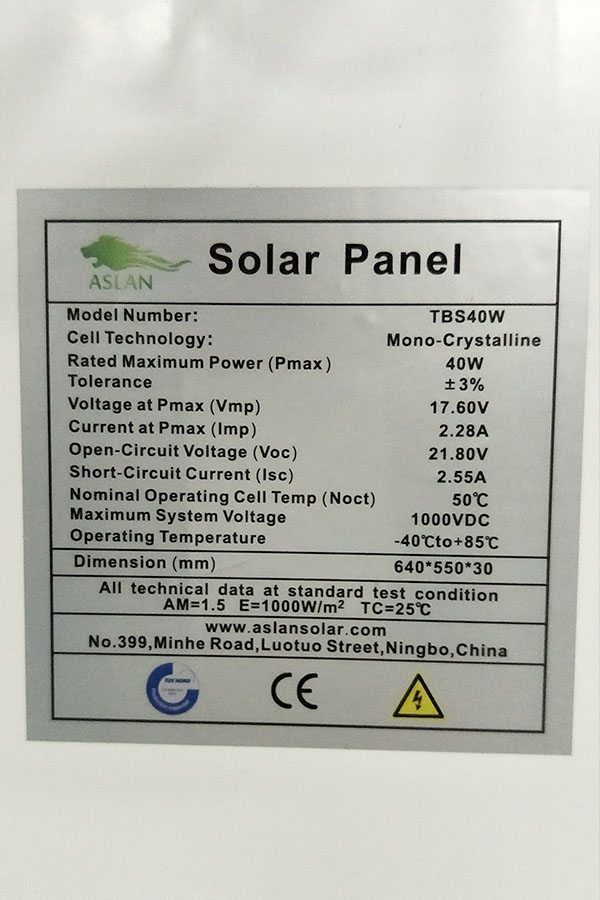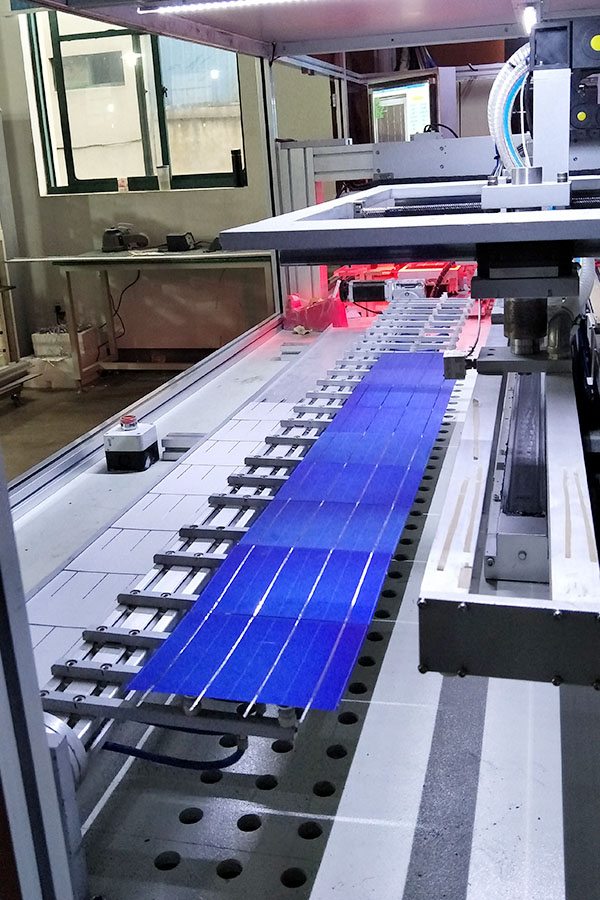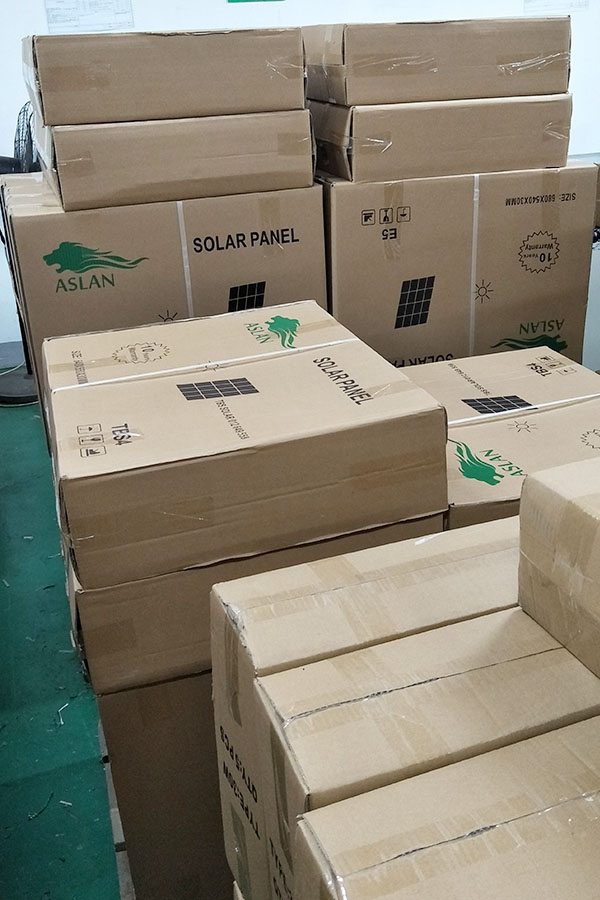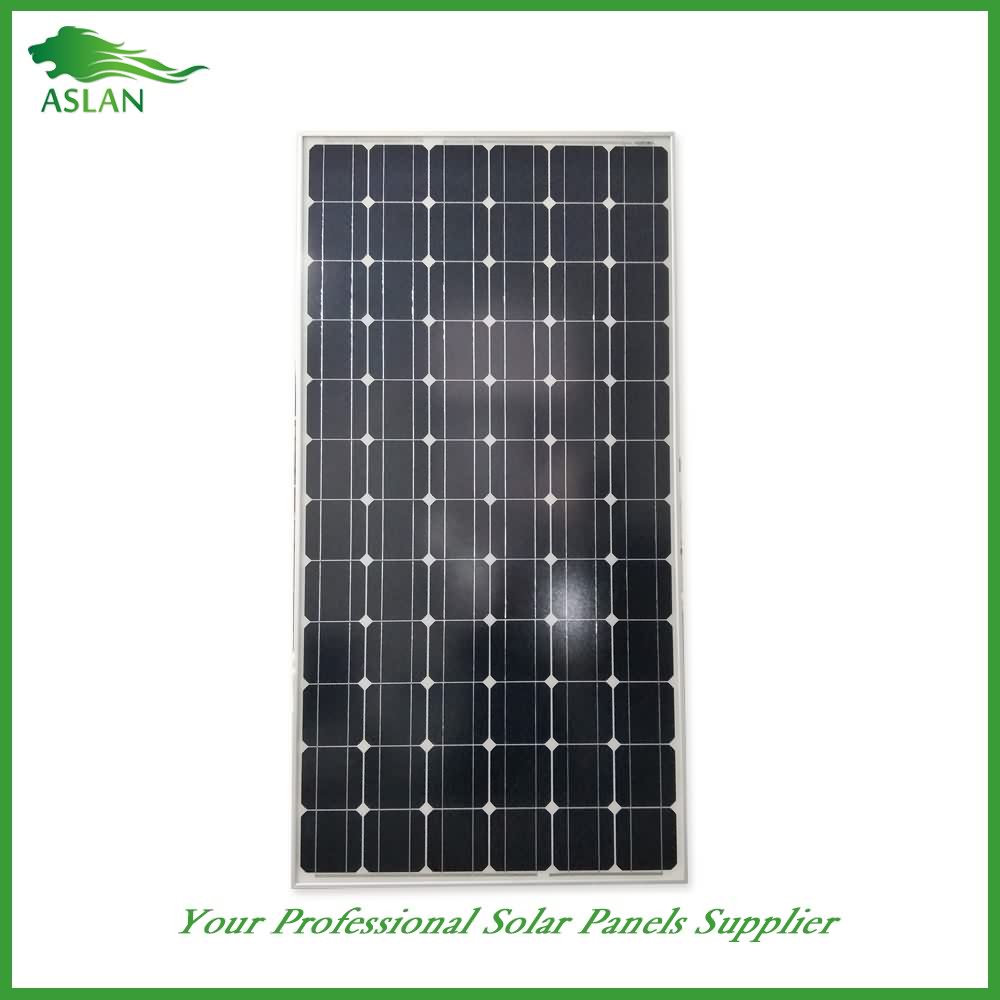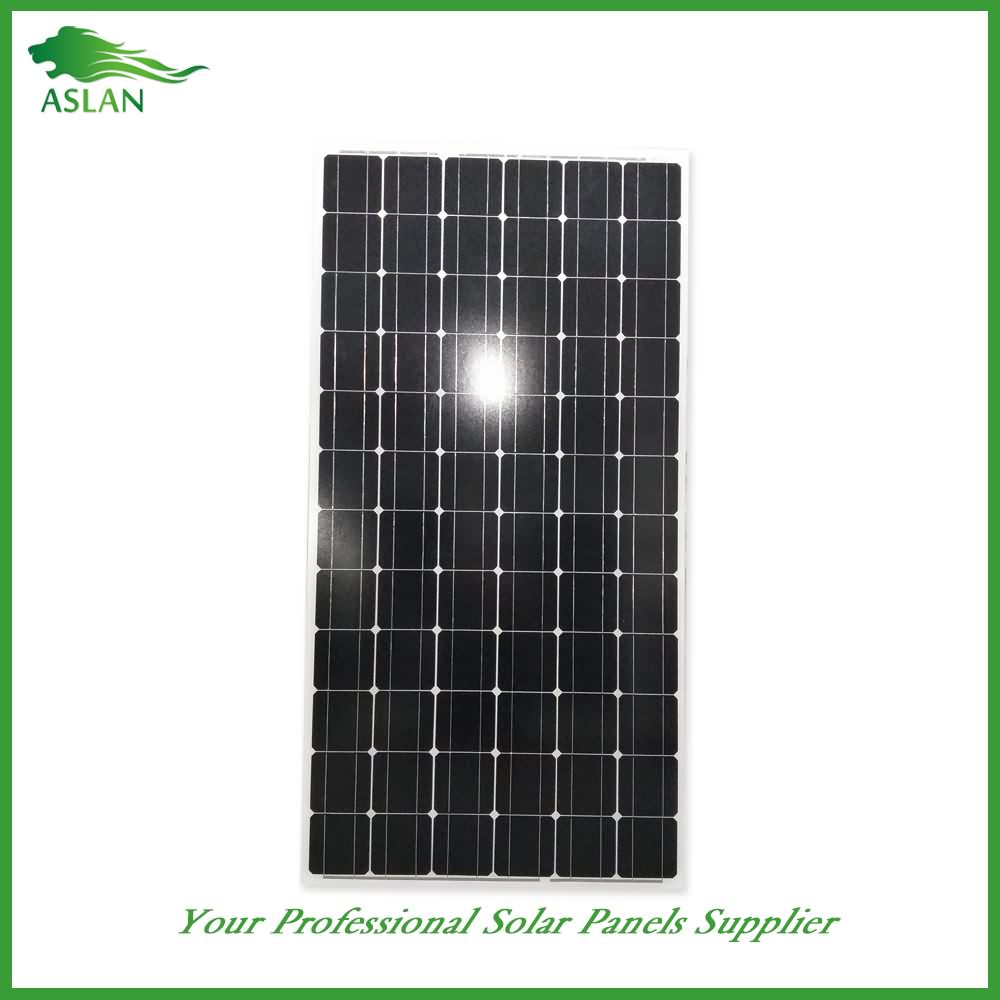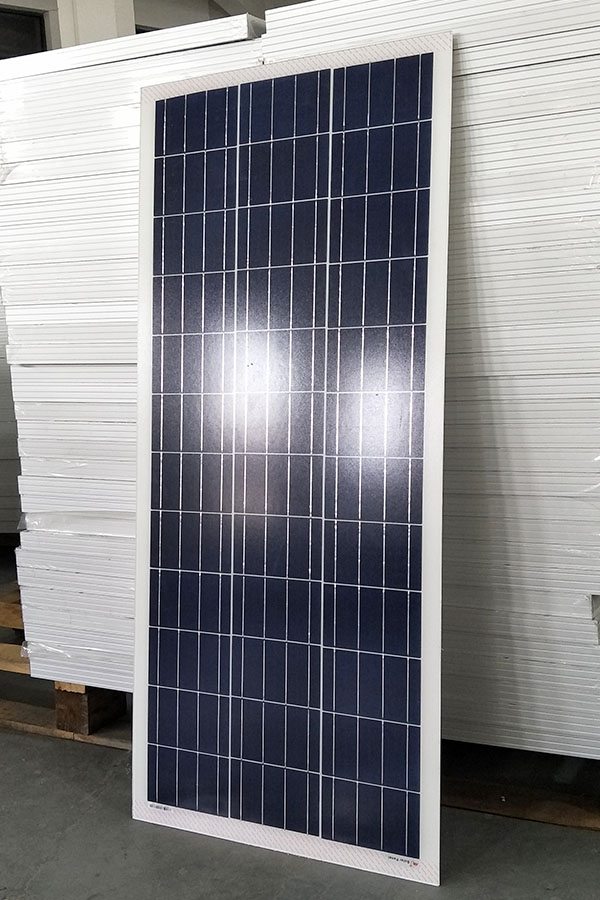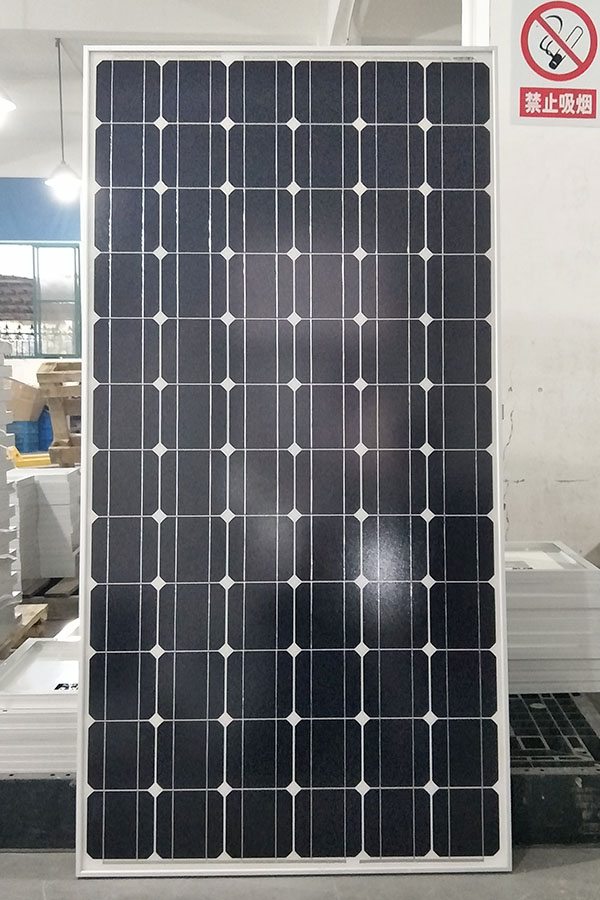10% OFF Price For Poly-crystalline Solar Panel 90W Manufacturer in Jeddah
Short Description:
Persisting in "High quality, Prompt Delivery, Competitive Price", we have established long-term cooperation with clients from both overseas and domestically and get new and old clients' high comments for 10% OFF Price For Poly-crystalline Solar Panel 90W Manufacturer in Jeddah, we are looking forward to even greater cooperation with overseas customers based on mutual benefits. Please feel free to contact us for more detail
Poly-crystalline Solar Panel 90W
Technical parameter
Maximum Power(W) 90W
Optimum Power Voltage(Vmp) 18.33V
Optimum Operating Current(Imp) 4.91A
Open Circuit Voltage(Voc) 21.96V
Short Circuit Current(Isc) 4.89A
Mechanical Characteristics
Cell Type Poly-crystalline 156x104mm (6 inch)
No of Cell 36 (4x9pcs)
Dimensions 1008x678x35mm
Weight 8.0KGS
Front Glass 3.2mm,High Transmission, Low Iron,Tempered Glass
Junction box IP65 Rated
Output Cable TUV 1×4.0mm2/UL12AWG,Length:900mm
Temperature and Coefficients
Operating Temperature(°C): -40°C ~ + 85°C
Maximum System Voltage: 600V(UL)/1000V(IEC) DC
Maximum Rated Current Series: 15A
Temperature Coefficients of Pmax: -0.435%
Temperature Coefficients of Voc: -0.35%
Temperature Coefficients of Isc: 0.043%
Nominal Operationg Cell Temperature (NOCT): 47+/-2°C
Materials of solar panel
1).Solar Cell——Poly-crystalline solar cell 156*104mm
2).Front Glass——-3.2mm, high transmission, low iron, tempered glass
3).EVA——-excellent anti-aging EVA
4).TPT——-TPT hot seal made of flame resistance
5).Frame——anodized aluminum profile
6).Junction Box——-IP65 rated, high quality, with diode protection
Superiority: high quality anodized aluminum frame, high efficiency long life, easy installation, strong wind resistance, strong hail resistance.
Features
1. High cell efficiency with quality silicon materials for long term output stability
2. Strictly quality control ensure the stability and reliability, totally 23 QC procedures
3. High transmittance low iron tempered glass with enhanced stiffness and impact resistance
4. Both Poly-crystalline and Mono-crystalline
5. Excellent performance in harsh weather
6. Outstanding electrical performance under high temperature and low irradiance
Quality assurance testing
Thermal cycling test
Thermal shock test
Thermal/Freezing and high humidity cycling test
Electrical isolation test
Hail impact test
Mechanical, wind and twist loading test
Salt mist test
Light and water-exposure test
Moist carbon dioxide/sulphur dioxide
This video is the chronicling of the making of a small solar powered portable USB charger for charging cameras, mp3 players, ipods, blackberry, or any other mobile device that will charge from a usb port.
The power storage on this device is achieved through the use of a clearance $7 radio shack camcorder battery. The battery is 6 volts and 2700mah.
The battery is charged via a 12v solar panel connected directly to the battery with no regulation. I decided not to use any regulation from the solar panel to the battery because the panel I use is (at a maximum) 125mah, approximately 4-5% of the capacity of the battery.
Although the battery may be at risk for slightly overcharging, it’s highly unlikely that it will actually do much damage since a float charger would probably give around 5% anyway. Combined with the fact that it will be a slow charge (roughly 32.4 hours of daylight) instead of using fast charging commercial methods, I’ll probably see more life out of this battery than if I charge it with an actual charger.
A single pole double throw switch is used to switch between the charging terminals and the power for the USB device. I did this primarily because the voltage regulator I use to regulate the power to the USB port has a 2mah draw on standby. Given that this device needs to be as efficient as possible, I chose to have a switch so the voltage regulator would not be on while the battery is charging.
The voltage regulator used is a 5 volt low dropout regulator, which drops maybe .7 volts at most, which is perfect considering the battery is giving roughly 5.85 volts out of the box without an initial charge (the cells need to be broken in).
I have a 16v 470uF capacitor connected in parallel with the output of the regulator, and a 10k resistor connected from pins 2 and 3 to the positive voltage pin (output from the regulator).
My blackberry’s battery is 1100mah, so I should be able to get 2 full charges from a COMPLETELY dead battery and still have a little juice left over on one battery charge. Given 8 hours of good sunlight, the battery on the USB charging device should charge in approximately 4 days.
So this is not a permanent use supply, but at least 2 full charges per week can be a great emergency charging device when your out of reach from your charger or other power source. I’m thinking long bike rides, camping, beach, etc,…
Feel free to suggest improvements, as I’m always looking to better the devices I make. Also, feel free to ask questions; however, I’m not extremely knowledgeable in the subject.
Special thanks to Kevin MacLeod at incompetech.com for the music. His song “harmful or fatal” is Licensed under Creative Commons “Attribution 3.0″ http://creativecommons.org/licenses/by/3.0/
ติดต่อ ร้าน NBL System
Tel : 089-145-5684
Line : ballwarut
https://www.facebook.com/nbl.system
ติดต่อ ร้าน Patteera-Shop
Tel : 094-071-5406
Line กด http://line.me/ti/p/gNPFjUVy69
https://www.facebook.com/patteerashop/
ติดต่อ ร้าน Power.intown
Inbox กด http://m.me/power.intown
Line กด http://line.me/ti/p/6Med9Hbhtw
Tel กด 09-5253-0057 (12.00-24.00 เที่ยงวัน-เที่ยงคืน)
.
ข้อมูลสินค้า กด http://powerintown.lnwshop.com/
รีวืว กด https://www.youtube.com/channel/UCLF2XnBQvFBgj1U7cznO6QQ
